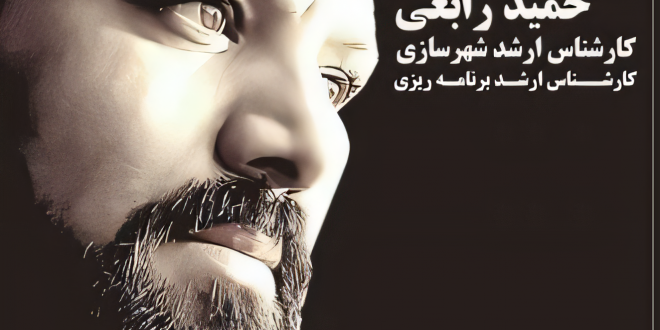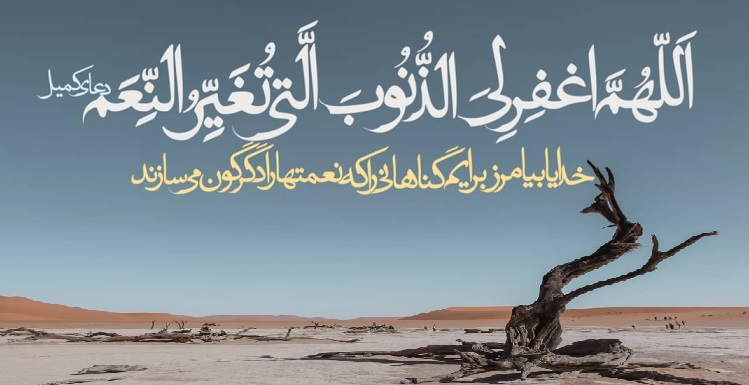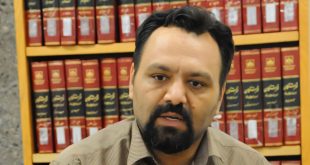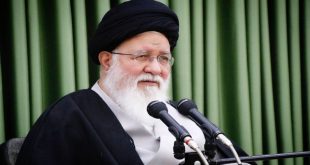Hamid Rabei, born on June 1, 1979, is an accomplished Iranian artist, educator, and journalist known for his critical writings and significant contributions to the arts, education, and media in Iran. After losing his father at a young age, he pursued a passion for art and education, becoming a teacher and earning degrees in various disciplines, including a master’s degree in Urban Engineering. Rabei is renowned for his work in the Quranic arts and the restoration of historical manuscripts, making substantial contributions to the revival of the Islamic artistic heritage through his projects aimed at preserving the legacy of the Ahl al-Bayt’s texts.
Hamid Rabei was born in Iran and lost his father at the age of seven due to an explosion at a refinery.
He pursued his education in art and teaching, eventually choosing to study at the Teacher Training University.
Rabei began his journalism career during university, writing critical articles for several newspapers, including Khorasan.
He has worked as an official employee in education since 2001, teaching in over 20 educational institutions.
Rabei’s artistic pursuits include calligraphy, painting, and graphic design, having been trained by notable masters in each field.
He has successfully revitalized historical Quranic manuscripts and developed software to recreate scripts attributed to the Imams.
Rabei’s recent projects include his book titled “The Absent Jurist,” addressing the legal and actual standing of the twelfth Imam within the Islamic Republic of Iran.
What are the key contributions of Hamid Rabei to Iranian art and education?
How does Hamid Rabei’s work reflect the Islamic artistic heritage?
What impact has Rabei’s journalism had on the discourse surrounding cultural and religious issues in Iran?
What are the key contributions of Hamid Rabei to Iranian art and education?
Hamid Rabei has made significant contributions to Iranian art and education through various avenues:
Artistic Achievements
Calligraphy and Manuscript Restoration: Rabei is renowned for his expertise in Quranic arts, particularly in calligraphy. He has restored historical manuscripts and developed software to recreate scripts attributed to the Imams, thereby preserving Islamic artistic heritage.
Training and Mentorship: He has trained under notable masters in calligraphy, painting, and graphic design, enhancing his skills and contributing to the artistic community.
Exhibitions and Awards: Rabei has received several accolades, including third place at the International Imam Reza Festival and second place at the International Media Festival, showcasing his artistic talents on a broader platform.
Educational Contributions
Teaching: Since 2001, Rabei has been a dedicated educator, teaching art, Quran studies, and computer skills in over 20 educational institutions. He currently serves as a high school teacher in Mashhad.
Curriculum Development: His involvement in educational institutions includes developing curricula that integrate art and religious studies, fostering a holistic educational environment.
Journalism and Critical Writing: Rabei began his journalism career during his university years, writing critical articles that address cultural and religious issues, thus contributing to public discourse and education.
Cultural Projects
Quranic Arts Projects: He has initiated projects aimed at reviving and preserving Quranic texts and Islamic art forms, including the creation of a comprehensive software for recreating Quranic scripts.
Publications: Rabei authored the book “The Absent Jurist,” which discusses the legal and actual standing of the twelfth Imam in the context of the Islamic Republic of Iran, contributing to the academic discourse on religious authority.
Community Engagement
Media Management: He has managed various media outlets related to Quranic studies and Islamic culture, furthering the reach of educational content and artistic expression.
Through these contributions, Hamid Rabei has played a vital role in enriching Iranian art and education, promoting cultural heritage, and fostering critical thinking within the community.
How does Hamid Rabei’s work reflect the Islamic artistic heritage?
Hamid Rabei’s work reflects Islamic artistic heritage through several key contributions:
Revival of Historical Manuscripts
Rabei has dedicated significant efforts to restoring and reviving historical Quranic manuscripts. His work includes recreating scripts attributed to the Imams, which helps preserve the traditional calligraphic styles and artistic expressions of Islamic culture.
Calligraphy and Quranic Arts
As a skilled calligrapher, Rabei has trained under renowned masters and has developed a deep understanding of various Islamic calligraphic styles, including Nasta’liq and Thuluth. His designs, such as the “Special Salawat” attributed to Imam Reza, showcase the intricate beauty and spiritual significance of Islamic calligraphy.
Innovative Software Development
Rabei has created software for the digital recreation of Quranic scripts, which not only aids in the preservation of these texts but also makes them accessible to a wider audience. This technological approach bridges traditional art forms with modern methods, ensuring the continuity of Islamic artistic practices.
Cultural Projects and Publications
His projects, such as the “Quranium,” which translates the Quran into various languages, and his book “The Absent Jurist,” delve into the intersection of Islamic teachings and contemporary issues. These works reflect a commitment to disseminating Islamic knowledge and heritage in a modern context.
Community Engagement and Education
Rabei’s role as an educator in over 20 institutions allows him to impart knowledge of Islamic arts and culture to new generations. His teaching includes Quran studies, art, and computer skills, fostering an appreciation for Islamic heritage among students.
Artistic Exhibitions and Recognition
His participation in international festivals and competitions, where he has received multiple awards, highlights the recognition of his contributions to Islamic art. These accolades not only celebrate his individual talent but also promote the broader appreciation of Islamic artistic heritage.
Through these efforts, Hamid Rabei not only preserves but actively revitalizes Islamic artistic heritage, ensuring its relevance and appreciation in contemporary society.
What impact has Rabei’s journalism had on the discourse surrounding cultural and religious issues in Iran?
Hamid Rabei’s journalism has significantly impacted the discourse surrounding cultural and religious issues in Iran through several key avenues:
Critical Voice in Media
Rabei began his journalism career during his university years, writing critical articles for prominent newspapers like Khorasan. His critical stance has contributed to a broader dialogue on cultural and religious matters, challenging prevailing narratives and encouraging public discourse.
Focus on Social Justice
His writings often reflect a spirit of social justice and critique of authority, particularly regarding the management of significant religious institutions, such as the Astan Quds Razavi. This critical perspective has sparked discussions about accountability and transparency within these organizations.
Integration of Art and Culture
Rabei’s background in art and education allows him to approach cultural issues from a unique angle, blending artistic expression with journalistic inquiry. This integration enriches the discourse by highlighting the importance of cultural heritage and artistic practices in shaping religious identity.
Educational Contributions
As an educator, Rabei has influenced the next generation of thinkers and artists, instilling in them the importance of critical thinking and engagement with cultural and religious issues. His role in over 20 educational institutions has helped cultivate a more informed and active citizenry.
Publications and Projects
His various projects, including the “Quranium” initiative and the book “The Absent Jurist,” address contemporary religious and legal issues within the context of Islamic teachings. These works contribute to the academic and public understanding of the role of religious authority in modern Iran.
Media Management
Rabei has managed several media outlets related to Quranic studies and Islamic culture, further amplifying discussions on these topics. His leadership in these platforms has facilitated the dissemination of diverse viewpoints and scholarly work.
Through these efforts, Hamid Rabei has established himself as a significant figure in Iranian journalism, influencing cultural and religious discourse and promoting a more critical and engaged public dialogue
 آکادمی رابعی اخبار ، مقالات ،آثار و برنامه های مهندس حمید رابعی
آکادمی رابعی اخبار ، مقالات ،آثار و برنامه های مهندس حمید رابعی











